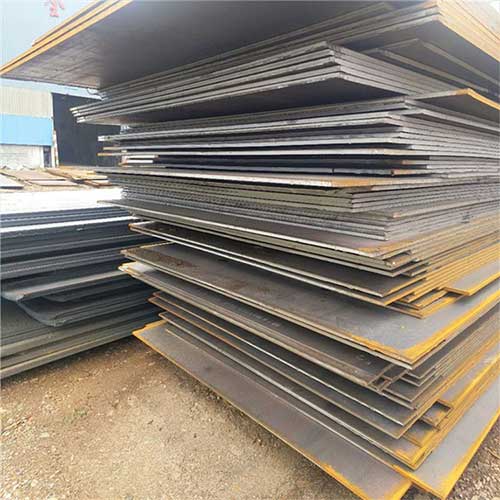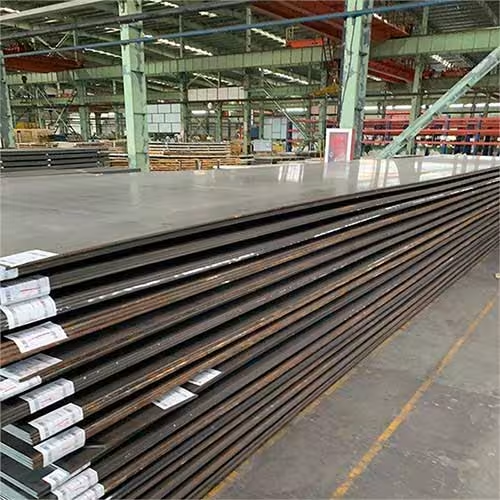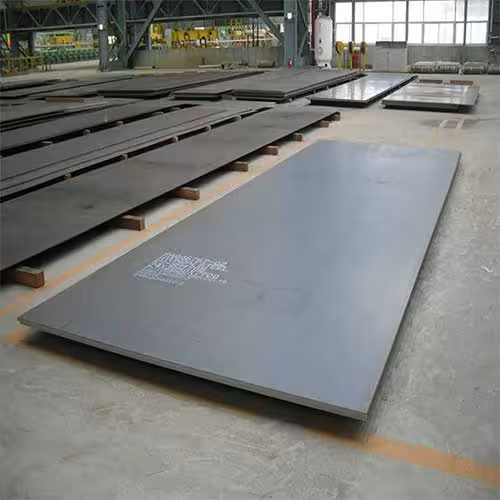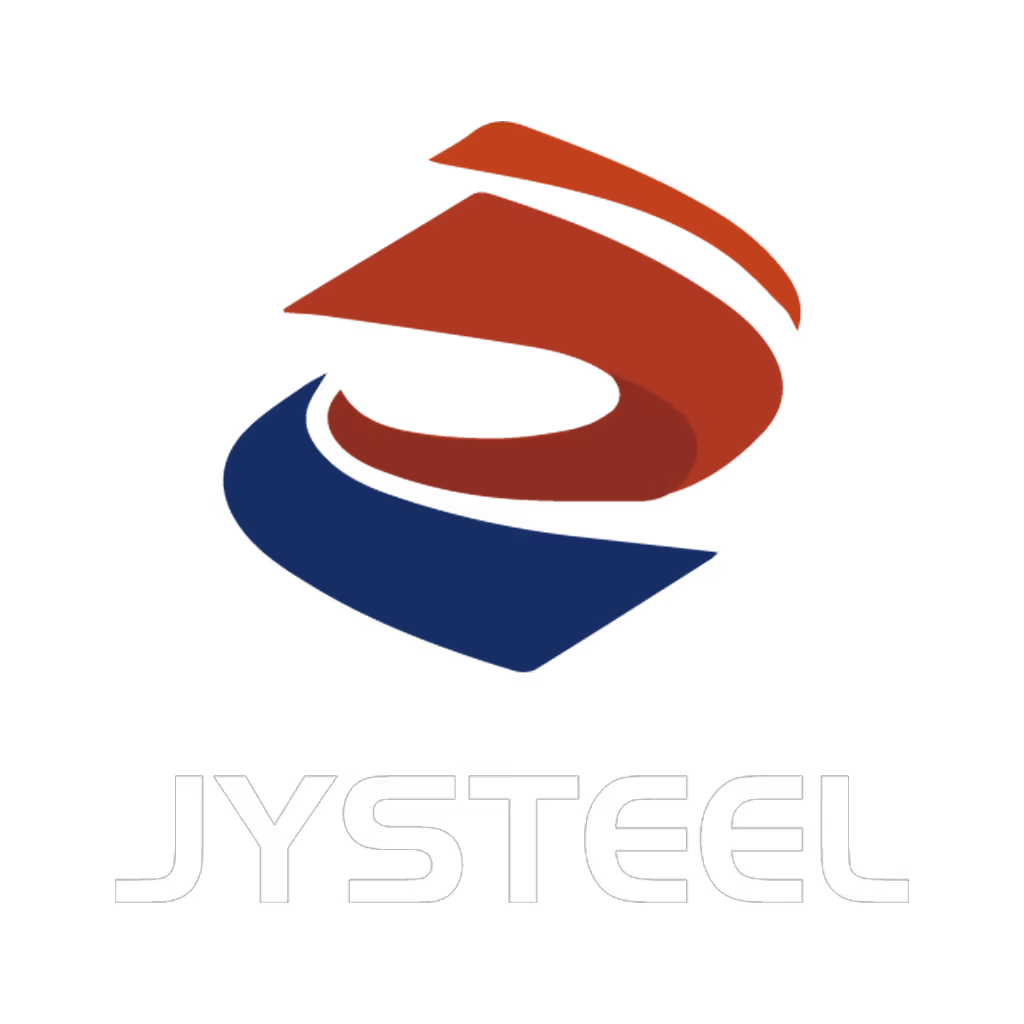مرحبًا بك في مدونتي!
قبل أن نتعمق في المحتوى، أود أن تنضموا إليّ على منصات التواصل الاجتماعي الخاصة بي حيث أشارك المزيد من الأفكار وأتفاعل مع المجتمع وأنشر التحديثات. إليك كيف يمكنك التواصل معي:
فيسبوك : فيسبوكhttps://www.facebook.com/profile.php?id=61565500692293
والآن، لنبدأ رحلتنا معًا. آمل أن تجدوا المحتوى هنا ثاقباً وجذاباً وقيّماً.
جدول المحتويات
مقدمة

أصبح بناء الألواح الفولاذية عنصرًا أساسيًا في مختلف الصناعات نظرًا لقوتها الاستثنائية وتعدد استخداماتها ومتانتها. وسواء في ناطحات السحاب أو الجسور أو الآلات الصناعية، فإن الاستخدام الاستراتيجي للصفائح الفولاذية يسمح بإنشاء هياكل أكثر أمانًا وكفاءة يمكنها تحمل الأحمال الكبيرة والظروف البيئية القاسية.
تستكشف هذه المدونة الجوانب الهامة لبناء الألواح الفولاذية وتطبيقاتها الرئيسية وفوائدها البارزة وأفضل الممارسات لاستخدام الألواح الفولاذية بفعالية في المشاريع الحديثة.
فهم أساسيات صفيحة فولاذية الإنشاءات
ينطوي بناء ألواح الصلب على استخدام صفائح سميكة ومسطحة من الصلب بأحجام ودرجات مختلفة، يتم تشكيلها لتلبية المتطلبات الهيكلية المحددة للمشروع. تُصنع ألواح الصلب من الفولاذ الكربوني أو الفولاذ المقاوم للصدأ أو سبائك الفولاذ، اعتمادًا على الخواص الميكانيكية المطلوبة مثل قوة الشد ومقاومة الصدمات ومقاومة التآكل.
إن أحد الأسباب الرئيسية التي تجعل صناعة الألواح الفولاذية بارزة للغاية هو قدرتها على التكيف مع مختلف أحجام المشاريع والمتطلبات الهندسية. وسواء كانت تشكل قلب هيكل السفينة أو تدعيم أساسات المبنى، فإن الألواح الفولاذية تقدم أداءً لا مثيل له.
التطبيقات الرئيسية لألواح الصلب الإنشائية

يمتد استخدام ألواح الصلب الإنشائية إلى مجموعة واسعة من الصناعات ومشاريع البنية التحتية. وتشمل بعض التطبيقات الأكثر شيوعاً ما يلي:
إنشاء الألواح الفولاذية في هياكل المباني
يلعب البناء بالصفائح الفولاذية دوراً حيوياً في الهندسة المعمارية الحديثة، خاصةً في المباني الشاهقة والمنشآت التجارية الكبيرة. توفر ألواح الصلب دعماً ممتازاً للجدران الحاملة وأنظمة الأرضيات وأطر الأسقف. كما أن نسبة قوتها العالية إلى الوزن تجعلها خياراً مثالياً لتقليل استخدام المواد مع زيادة السلامة الهيكلية إلى أقصى حد.
بناء ألواح الصلب في بناء السفن
تعتمد صناعة بناء السفن اعتمادًا كبيرًا على بناء الألواح الفولاذية نظرًا لقوة المادة ومرونتها ومقاومتها للتآكل الناتج عن مياه البحر. غالباً ما يتم تصنيع الهياكل والأسطح والحواجز من ألواح الصلب لضمان قدرة السفن على تحمل البيئات المحيطية القاسية والضغوط الميكانيكية الثقيلة.
بناء الألواح الفولاذية في الجسور والبنية التحتية
الجسور هي مجال آخر يتألق فيه بناء الألواح الفولاذية. حيث تُستخدم الألواح الفولاذية في بناء أسطح الجسور والعوارض والعوارض الخرسانية للجسور، مما يوفر المتانة اللازمة للتعامل مع الأحمال المرورية العالية والظروف الجوية القاسية. كما تستخدم مشروعات البنية التحتية مثل الطرق السريعة والأنفاق والمطارات في إنشاء الصفائح الفولاذية على نطاق واسع.
بناء ألواح الصلب في المعدات الصناعية
غالبًا ما تستخدم الآلات الثقيلة، وخطوط أنابيب النفط والغاز، ومعدات التعدين ألواح الصلب لتعزيز المتانة والسلامة التشغيلية. وغالبًا ما يجب أن تفي ألواح الصلب المستخدمة في هذا السياق بمعايير الجودة الصارمة لضمان مقاومة الإجهاد والتآكل والتآكل الكيميائي.
الدرجات والخصائص الشائعة لألواح الصلب الإنشائية
| درجة صفيحة الصلب | نوع المادة | التطبيقات النموذجية | الخصائص الرئيسية |
|---|---|---|---|
| A36 | الفولاذ الكربوني | البناء، الجسور | قابلية لحام جيدة، قوة معتدلة |
| 304 | الفولاذ المقاوم للصدأ | تجهيز الأغذية، خزانات المواد الكيميائية | مقاومة ممتازة للتآكل |
| 316 | الفولاذ المقاوم للصدأ | التطبيقات البحرية، منصات النفط | مقاومة فائقة للتآكل في المياه المالحة |
| 4140 | سبائك الصلب | أجزاء الماكينات، الأنابيب الهيكلية | قوة عالية ومقاومة عالية للصدمات |
| S355 | الفولاذ الإنشائي | المنصات البحرية، الهياكل الكبيرة | قوة خضوع عالية وقابلية تشكيل جيدة |
فوائد بناء الألواح الفولاذية

تُعد مزايا استخدام ألواح الصلب كبيرة ومعترف بها على نطاق واسع في مختلف الصناعات.
قوة هيكلية معززة
توفر الألواح الفولاذية قوة ميكانيكية فائقة، مما يمكّن الهياكل من تحمل المزيد من الوزن ومقاومة الضغوط البيئية دون تشوه أو تعطل.
متانة فائقة
تتمثل إحدى المزايا البارزة لبناء الألواح الفولاذية في متانتها التي تدوم طويلاً. يمكن أن تدوم الهياكل المبنية بألواح الصلب لعقود من الزمن بأقل قدر من الصيانة، حتى في الظروف الصعبة.
مرونة التصميم
يوفر بناء الألواح الفولاذية للمهندسين والمعماريين حرية تصميم أكبر. يمكن قطع الألواح ولحامها وتشكيلها بأي شكل تقريباً، مما يدعم التصميمات المعمارية المعقدة واحتياجات البنية التحتية الوظيفية.
كفاءة التكلفة مع مرور الوقت
على الرغم من أن التكاليف الأولية قد تكون أعلى من المواد الأخرى، إلا أن طول العمر والحد الأدنى من احتياجات الصيانة للصفائح الفولاذية يجعلها حلاً فعالاً للغاية من حيث التكلفة على المدى الطويل.
الاستدامة البيئية
ألواح الصلب قابلة لإعادة التدوير وإعادة الاستخدام، مما يقلل من الأثر البيئي لمشاريع البناء. يساهم بناء الألواح الفولاذية في الحصول على شهادات المباني الخضراء وأهداف التنمية المستدامة.
الخاتمة
لا يزال البناء بالألواح الفولاذية حجر الزاوية في الممارسات الهندسية وممارسات البناء الحديثة نظراً لما يتميز به من مزيج لا مثيل له من القوة والمتانة والتنوع. وسواء كنت تقوم بتصميم ناطحة سحاب تجارية أو بناء جسر أو تصنيع آلات صناعية، فإن فهم تطبيقات وفوائد بناء الألواح الفولاذية يمكن أن يؤثر بشكل كبير على نجاح واستدامة مشروعك.
الاختيار يضمن لك النوع المناسب من ألواح الصلب والعمل مع موردين ذوي سمعة طيبة الاستفادة من الإمكانات الكاملة لهذه المادة الرائعة.
الأسئلة الشائعة
ما هي درجة صفيحة الصلب الأكثر استخداماً في البناء؟
يعد الفولاذ الكربوني A36 أحد الخيارات الأكثر شيوعًا نظرًا لقابليته الجيدة للحام وقوته وفعاليته من حيث التكلفة للتطبيقات الإنشائية العامة.
كيف يمكنني اختيار الصفيحة الفولاذية المناسبة لمشروعي؟
يعتمد الاختيار على عوامل مثل متطلبات الحمولة، والتعرض البيئي، ومخاطر التآكل، والمعايير التنظيمية. يوصى بشدة باستشارة مهندسي المواد.
هل بناء الألواح الفولاذية أغلى من الطرق التقليدية؟
قد تكون التكاليف الأولية أعلى، ولكن غالباً ما يؤدي بناء الألواح الفولاذية إلى تحقيق وفورات على مدار دورة حياة المشروع بسبب المتانة وانخفاض احتياجات الصيانة.
هل يمكن تخصيص ألواح الصلب لتطبيقات محددة؟
نعم، يمكن قطع الألواح الفولاذية وحفرها ولحامها وتشكيلها لتلبية المواصفات المخصصة، مما يتيح إمكانية تكيف عالية في المشاريع المعقدة.
ما هي الفوائد البيئية لبناء الألواح الفولاذية؟
تتميز الألواح الفولاذية بقابليتها العالية لإعادة التدوير وتساهم في تقليل آثار الكربون في البناء، مما يجعلها خياراً صديقاً للبيئة.

